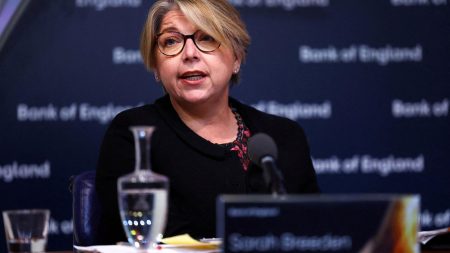Tensions in the Middle East are identified as the main threat to a potential interest rate cut by the European Central Bank, according to ECB policymaker Robert Holzmann. He emphasized that geopolitical events in the region, such as an abrupt rise in oil prices due to conflict, could necessitate a reevaluation of the ECB’s strategy. Holzmann, along with other ECB officials, highlighted the importance of energy prices and their impact on inflation in Europe. The risk of conflicts in the Middle East and Eastern Europe, such as Iran-Israel tensions and the Russia-Ukraine war, could influence the timing of a rate cut.
Israeli forces responded to Iran’s air attack on Israel on Saturday, prompting world leaders to call for restraint in the aftermath of the offensive. Despite these tensions, oil prices were lower in London, with concerns about demand outweighing potential supply disruptions. The decline in oil prices for a third consecutive session reflects the complex dynamics influencing the global economy. Holzmann’s cautious approach to interest rate cuts underscores the need for prudence in monetary policy decisions during times of geopolitical uncertainty.
ECB President Christine Lagarde indicated that the central bank is moving closer to a rate reduction, unless there are major surprises in the economic outlook. She highlighted the disinflationary process that the ECB is monitoring and expressed confidence in the institution’s ability to adjust its monetary policy accordingly. Lagarde’s comments align with growing expectations for a rate cut in the near future, with economists pointing to June as a key decision-making month. ECB policymakers, including Mario Centeno, stressed the importance of data dependency and alignment with economic recovery forecasts in determining the timing of rate adjustments.
The ECB’s decision to leave its policy unchanged at the recent meeting, combined with signals of a potential rate cut in the future, indicate a nuanced approach to managing inflation and economic stability. The institution’s willingness to consider lowering the deposit rate if inflation trends continue to fall back toward the 2% target reflects a cautious but proactive stance on monetary policy. Speculation about ECB rate cuts contrasts with reduced expectations for rate reductions by the Federal Reserve, further highlighting the unique challenges facing central banks in different regions. The ECB’s evolving language and strategies suggest a deliberate and calculated response to changing economic conditions.
Overall, the uncertainties in the Middle East and Eastern Europe pose significant challenges for the ECB in determining the timing of a potential rate cut. Geopolitical tensions, particularly in relation to energy prices, are identified as key factors influencing the central bank’s decision-making process. ECB officials emphasize the need for data dependency and alignment with economic forecasts in navigating the complex landscape of inflation and monetary policy. As the global economy faces ongoing uncertainties and risks, central banks like the ECB must carefully balance economic stability with geopolitical events that can disrupt financial markets and impact inflation rates. The nuanced approach taken by the ECB underscores the importance of adaptability and prudence in responding to dynamic economic conditions.















